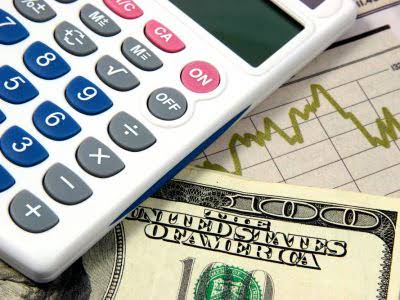Shares Outstanding Formula + Calculator

Generally, both of these figures can be found on a company’s balance sheet. The number of shares outstanding consists of shares held by institutions, restricted shares held by company insiders, and shares available for investors to buy and sell on the open market. Outstanding shares play a crucial role in determining a company’s market capitalization, a key metric for investors assessing a firm’s overall value.
Different Types of Share Counts

The market cap is calculated by multiplying the current market price per share by the total number of outstanding shares. This metric provides investors with insights into a company’s size and relative importance within the market. Outstanding shares impact a company’s market capitalization, which is calculated by multiplying the stock price by the number of outstanding shares. Changes in the number of outstanding shares can affect the stock price by altering supply and demand dynamics.

How to calculate dividends from the balance sheet
- These factors directly impact outstanding shares, influencing investment decisions.
- That’s why I teach students in my Trading Challenge how to become self-sufficient traders.
- Outstanding shares are the shares in the hands of the public, executives and employees.
- Outstanding shares are those owned by stockholders, company officials, and investors in the public domain, including retail investors, institutional investors, and insiders.
- The calculation for common stock outstanding can seem a little daunting at first simply because so much accounting jargon is used to define and calculate it.
- Stock might be sold to raise capital; convertible debt might move into, or out of, the money.
One of the highlights of the new-gen Samco trading app is a unique proprietary engine that thoroughly analyses past trades and trading patterns to generate multiple unseen insights or Andekha Sach. As a trader, you can use these insights to improve your trading performance and profitability. If you want to learn the process, patterns, and mindset I use, apply for my Trading Challenge today. I expect the worst out of every company so I’m never disappointed. The inputs you’ll need for this calculation are located on the balance sheet. Again, it seems to be an extraordinarily simple definition that results in a fixed, easy-to-understand number.

Understanding outstanding shares
- In other words, the treasury stock method accounts for the cash that will come in from option and warrant exercise, and assumes that the cash received will offset a portion of the shares issued.
- To determine how much a company pays each shareholder, you can calculate dividends per share (DPS).
- Moreover, the number of shares outstanding is extremely useful when monitoring how a company conducts its business, as things like stock splits also affect share numbers.
- Investors use outstanding shares to gauge a company’s size and compare it with peers.
- This figure is important as it shows the company’s intention to distribute profits, even if the payments have not yet been made.
- Assume that Company A has 100 million shares outstanding and a trading price of $10.
In contrast, a lower yield from a stable or growing company might indicate assets = liabilities + equity a safer, more sustainable dividend. Understanding DPS is also crucial when comparing companies in similar sectors since it highlights the income potential of different investments. A consistent or growing DPS can signal a company’s strong financial health and commitment to rewarding its shareholders, while a declining DPS may indicate challenges ahead. This formula tells investors how much dividend income they receive per share of stock they own. It’s beneficial for those who want to track their income from individual investments.
- With fewer available shares to trade, the fluctuations are larger.
- The float is the portion of outstanding shares that’s most relevant for smaller investors.
- A company also often keeps a portion of its total outstanding shares of stock in its treasury from both initial stock issues and stock repurchase.
- The company has 4.32 billion authorized common shares, of which 3,119,843,000 have been issued as of December 31, 2014.
- Whether an investor holds a small or large number of shares, DPS simplifies the process of calculating their total dividend income.
- Preferred stocks are higher ranking than common stock, but also subordinate to bonds in terms of claim, or rights to their share of the company’s assets.
Advanced dividend calculations
- Here, the balance sheet reports 8,019 million shares issued and 3,901 million treasury shares, as of September 30, 2022.
- Calculating dividends from the balance sheet involves understanding some key financial figures, mainly retained earnings.
- The fully diluted number of shares indicates how many outstanding shares there could potentially be if all existing equity instruments were converted into common stock.
- Outstanding shares equation differ from issued (Authorized) as authorized shares are the number of shares a corporation is legally allowed to issue.
- Stock options will be exercised; restricted stock may vest after executives hit certain targets.
- Changes in shares outstanding over time also reveal how valuable shares are as a stake of ownership in the company, as the number of shares available directly affects this.
As noted above, outstanding shares are used to determine very important financial metrics for public companies. These include a company’s market capitalization, such as market capitalization, earnings per share (EPS), and cash flow per share (CFPS). The chart below shows how each is calculated using outstanding shares. A company’s number of issued how to calculate outstanding shares shares includes any shares the company has bought back and now holds in its treasury. The term «float» refers to the number of shares available to be traded by the public and excludes any shares held by company executives or the company’s treasury. While shares outstanding account for company stock that includes restricted shares and blocks of institutional shares, floating stock specifically refers to shares that are available for trading.

The number of outstanding shares can fluctuate in other ways as well. In addition to the stocks they issue to investors and executives, many companies offer stock options and warrants. These are instruments that give the holder a right to purchase more stock from the company’s treasury. Every time one of these instruments is activated, the float and shares outstanding increase while the number of treasury stocks decreases. If all these warrants are activated, then XYZ will have to sell 100 shares from its treasury to the warrant holders. Outstanding shares represent a company’s shares that are held by investors, whether they’re individual, institutional, or insiders.






Comments are closed
Sorry, but you cannot leave a comment for this post.